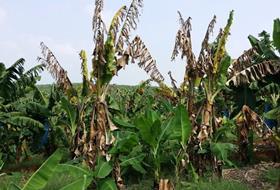
Aninternational team of researchers has developed artificial intelligence (AI) detection models to identify major diseases and pests in bananas.
The models, which are now being built into and app, scan plants for signs of five major diseases and one common pest allowing smallholder farmers to not only detect problems but share findings on a wider scale to help prevent the spread of outbreaks.
The models were tested on photos taken of bananas grown in India, China and Africa and most of the models had a detection accuracy of more than 90 per cent.
“This significant high success rate makes the model a useful early disease and pest detection tool, and this research could be further extended to develop a fully automated mobile app to help millions of banana farmers in developing countries,” said the findings, published in the Plant Methods journal on 12 August.
The study was completed by researchers from Bioversity International in Africa, India's Imayam Institute of Agriculture and Technology, and Texas A&M University in the US.
'There is very little data on banana pests and diseases for low-income countries, but an AI tool such as this one offers an opportunity to improve crop surveillance, fast-track control and mitigation efforts, and help farmers to prevent production losses,” said Michael Selvaraj, the study’s lead author, from Bioversity International.
The app using these models is called Tumaini and it is currently being tested in Benin, the Democratic Republic of the Congo, Uganda, Colombia, and India.
Tumaini, which means hope in Swahili, is designed to help smallholder banana growers quickly detect a disease or pest and prevent a wide outbreak from happening.
It can also upload data to a global system for large-scale monitoring and control. The app’s goal is to facilitate a robust and easily deployable response to support banana farmers in need of crop disease control.



